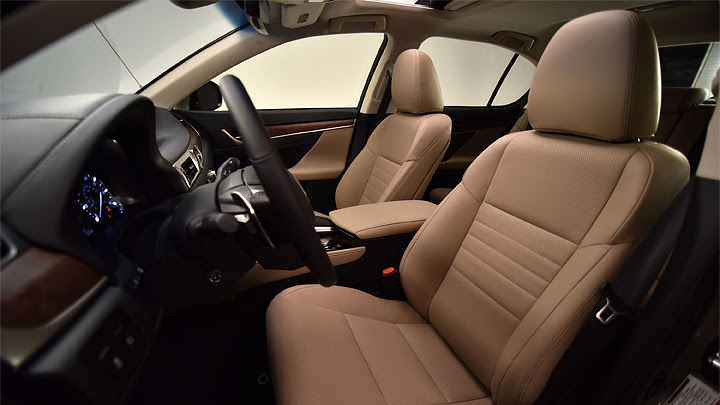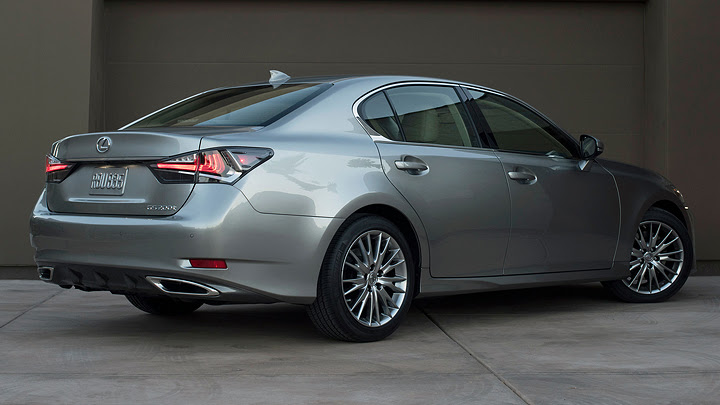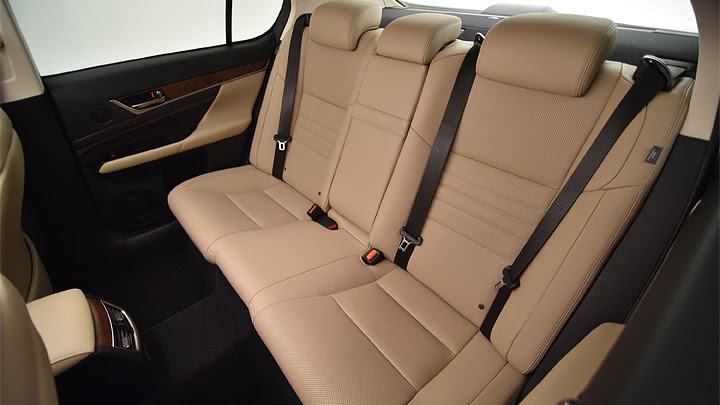
Since this is a luxury sedan, it’s natural to think its most important targets in the market are the German trio. The difference is that while Audi, BMW and Mercedes-Benz work with three main levels of sedans, Lexus managed to squeeze in a fourth model. The biggest one is LS, which takes on A8, 7-Series and S-Class. GS is the middle sibling, while IS competes at the entry level. However, Lexus likes to make its vehicles very sporty, which easily conflicts with the interests of many buyers. ES, therefore, is offered as a slightly more conservative option between the latter two, being cheaper than the first one and bigger than the other. Once those customers were satisfied, the company was freed to pursue the emotional customers. This is precisely the intention of GS’ refreshment for 2016.
As usual, the biggest change regarding design was the adoption of the latest spindle grille. This car was already using it for three years, but only now was it applied in its most aggressive interpretation ever. Like in pretty much the rest of the lineup, it’s tall enough to take the whole attention from the hood to the ground, and twisted enough to look like as if it was sucking headlights, DRLs and auxiliary grilles, like some sort of black hole. The sides received nothing but new wheel designs, as usual. The rear, in turn, carries a tweaked bumper and reinvented tail lights, whose new internal structure makes them look sleeker – everything takes your eyes to the brake lights, whose L shape was crafted with LEDs. Looking at this sedan from some particular angles explains why Lexus needed a more conservative model as well.










Inside, there are more options for the leather-wrapped cabin regarding color and trim. Aluminum scuff plates were added, a position memory was added to driver’s seat, exterior mirror, and steering wheel, the Enform Service Connect now gives you pertinent information, and the optional Safety System+ bundles all the omnipresent electronic programs: lane-departure warning, automatic steering assist, intelligent headlamp high-beam control, pedestrian detection, and a radar-based cruise control. Besides, the list of colors now reaches twelve, but there are two major updates under the hood. One is the 2.0-liter with turbocharger and direct injection already seen in NX and IS. It’ll work as an entry option for GS, delivers 241 hp and 258 lb-ft, and only comes with an eight-speed automatic transmission.
Those who want sportiness, though, have a whole new option dedicated for them. The previously announced GS F goes on sale as well, featuring a technical conception focused on being easy and fun to drive at high speeds, rather than just offering superlative performance figures. The typical style upgrades are there, specially outside, the propeller is RC’s 5.0-liter V8 (giving the same 467 hp and 389 lb-ft), and many components were altered, such as chassis and suspension. The intention, once again, is to use a whole different way to seduce people who usually buy German cars. Besides all that, the last option only using gasoline is the proven 3.5-liter V6, which was reworked in order to reach 311 hp and 280 lb-ft – the hybrid GS sports 338 combined hp. This vehicle will go on sale soon.